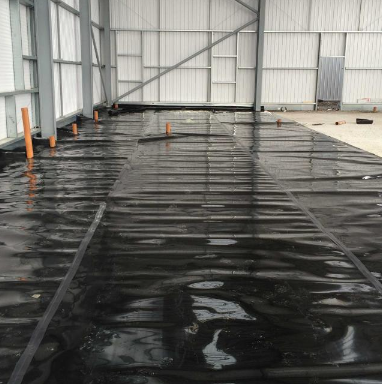- Understanding the Role of Geomembrane Liners in Waste Management
- Innovations in Geomembrane Liners for Water Management
- Geomembrane Liners: A Comprehensive Guide
- The Future of Geomembrane Liners in Civil Engineering
- Geomembrane Liners: Enhancing Landfill Stability
Manager:Alvin Wang
WhatsApp:+62 8983806051
Tel:+86 10-5797-1075
Email:steelwang@okorder.com
Address:3rd Floor, No.2 Building, No.1 Sanlihe Road
Does HDPE geomembrane float or sink in water?
High-density polyethylene (HDPE) geomembranes are a versatile material often used because of its impermeability and durability. However, there is some confusion about how this material behaves when submerged in water. In this article we will look at what makes up an HDPE liner and discuss its buoyancy in relation to different factors so as to answer the question: Does hdpe Geomembrane Floats or Sinks in Water?

Knowing The HDPE Geomembrane
Composition And Properties:
The thermoplastic polymer called high-density polyethylene is used to make synthetic liners such as these ones. Ethylene monomer units are polymerized through them. It has excellent chemical resistance, mechanical properties and is also known for being impermeable which is why it finds wide applications in civil engineering, environmental protection among others where it acts as a good barrier against liquids and gases.
Density And Buoyancy
Density of HDPE Geomembrane:
Density determines whether a material will float or sink on water since it is one of the basic characteristics that measure substances’ weightiness per unit volume. Typically, HDPE geomembranes have densities ranging between 0.94 – 0.97 g/cm³ which means they are less dense than the liquid (water) with density of approximately 1 g/cm³ hence can float when placed below its surface.
Buoyant Force:
According to Archimedes’ principle if any body partially or wholly immersed into any fluid experiences upward force equal to weight displaced by that object this force is referred as buoyant force. This implies that an item will start rising upwards until these two forces become equal i.e., object’s gravitational pull downwards being balanced out by fluid’s push towards opposite direction( upwards). If such condition prevails then thing must remain where it found itself initially.
For instance, HDPE geomembrane also can be applied as pond liners and landfill liners where it is designed to settle down and create a stable barrier at the bottom part of the structure. Liners that sink prevent seepage, groundwater pollution and soil erosion thus ensuring containment systems are safe and environmental friendly.

Conclusion
In conclusion, what happens to HDPE geomembrane in water depends on its density relative to that of water, thickness, surface condition and presence of air among others. However, the buoyancy behavior may be different depending on how it was installed or used since this material usually has lower density than water which makes it capable of floating. Whether they float or sink these types of lining remains useful for various engineering works since they help in containing things waterproofing them as well as safeguarding our environment through different construction projects.
- Previous:What happens when HDPE geomembrane is burned?
- Next:Can you put boiling water in HDPE geomembrane?
-
2024-12-05Geomembrane Liners: A Comprehensive Guide






